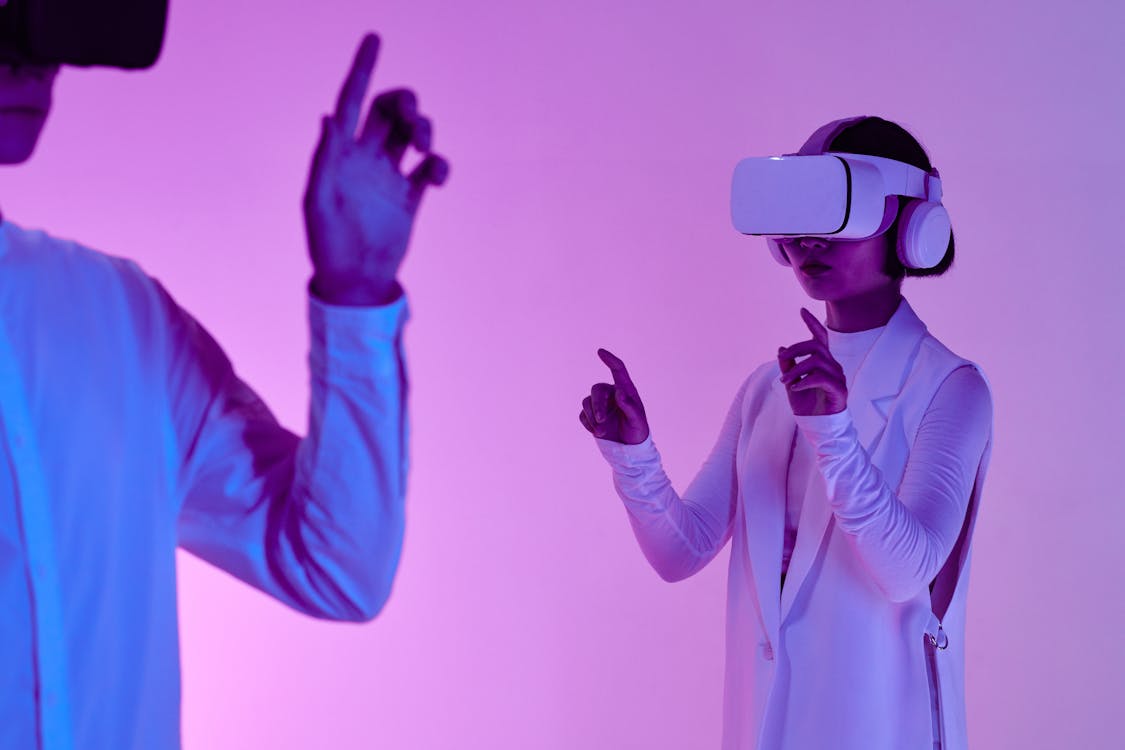Augmented Reality (AR) stands at the forefront of modern technology, offering a gateway to immersive digital experiences that blend the virtual world with the real one. From enhancing gaming and entertainment to revolutionizing industries like education, healthcare, and retail, AR holds the potential to transform the way we interact with our environment. In this comprehensive guide, we'll delve into the fundamentals of AR, explore learning resources, career paths, and provide valuable insights into harnessing the power of this groundbreaking technology.
Understanding Augmented Reality
Augmented Reality (AR) is a technology that overlays digital content, such as images, videos, or 3D models, onto the physical world, creating an enhanced interactive experience for users. Unlike Virtual Reality (VR), which immerses users in a completely virtual environment, AR enhances the real world by adding digital elements to it. This seamless integration of virtual and real-world elements opens up a myriad of possibilities across various domains, including gaming, education, and retail.
Fundamentals of AR
Tracking
AR tracking systems use sensors, cameras, and algorithms to track the user's position and orientation in the physical environment, enabling precise placement of digital content. Effective AR tracking is essential for creating a seamless and immersive experience, making it a cornerstone of any successful AR application.
Rendering
Digital content is rendered in real-time and overlaid onto the user's view of the physical world, creating the illusion of virtual objects coexisting with real ones. Real-time rendering ensures that AR experiences are smooth and responsive, crucial for applications in fields such as gaming and interactive learning.
Interaction
Users can interact with AR content through gestures, voice commands, or touch inputs, allowing for immersive and intuitive experiences. Effective interaction design in AR can enhance user engagement and satisfaction, making applications more enjoyable and effective.
Getting Started with AR
Learning Resources
Online Courses and Tutorials
- Coursera: Offers courses on AR development from top universities and institutions, covering topics such as AR fundamentals, development tools, and applications.
- Udemy: Provides a wide range of AR courses for beginners to advanced learners, including hands-on projects and practical exercises.
- YouTube Channels: Channels like "Augmented Reality for Developers" and "AR Critic" offer tutorials, tips, and demonstrations of AR development techniques.
Documentation and Guides
- Unity3D Documentation: Unity is a popular game engine used for AR development, and its official documentation provides comprehensive guides, tutorials, and examples for building AR experiences.
- Apple ARKit Documentation: Apple's ARKit is a framework for building AR applications for iOS devices, and its documentation offers detailed guides and sample code for developers.
Online Communities and Forums
- Unity Forum: The Unity community forum is a valuable resource for AR developers, offering support, advice, and collaboration opportunities.
- Stack Overflow: Stack Overflow's AR tag is a great place to ask questions, share knowledge, and learn from experienced developers in the AR community.
Free Tools and Development Platforms
- Unity3D: Unity is a popular game engine that supports AR development through its AR Foundation framework, enabling developers to create AR experiences for a variety of platforms, including iOS, Android, and HoloLens.
- ARCore: Google's ARCore is a platform for building AR applications for Android devices, providing tools, libraries, and APIs for developers to create immersive AR experiences.
- ARKit: Apple's ARKit is a framework for building AR applications for iOS devices, offering tools and resources for developers to create high-quality AR experiences for iPhone and iPad users.
Career Paths in AR
Augmented Reality Developer
Augmented Reality Developers specialize in creating immersive AR experiences for various platforms, such as mobile devices, smart glasses, and headsets. They are proficient in AR development tools and technologies, including Unity, ARKit, ARCore, and 3D modeling software. With the growing demand for AR applications, developers in this field have numerous career opportunities.
AR UX/UI Designer
AR UX/UI Designers focus on designing intuitive and engaging user interfaces for AR applications. They collaborate with developers and stakeholders to create seamless user experiences and optimize interactions in AR environments. A keen understanding of both user experience design and AR technology is crucial for success in this role.
AR Content Creator
AR Content Creators produce engaging multimedia content, such as 3D models, animations, and interactive elements, for AR applications and experiences. They possess strong artistic and technical skills, including 3D modeling, animation, and rendering. Content creators play a vital role in bringing AR experiences to life, making them indispensable in the AR ecosystem.
References and Further Reading
- Azuma, Ronald. "A Survey of Augmented Reality." Presence: Teleoperators and Virtual Environments, vol. 6, no. 4, 1997, pp. 355–385.
- Kipper, Greg, and Rampolla, Joseph. Augmented Reality: An Emerging Technologies Guide to AR. Syngress, 2008.
- Craig, Alan B. Understanding Augmented Reality: Concepts and Applications. Morgan Kaufmann, 2013.
- Billinghurst, Mark, and Dunser, Andreas. "Augmented Reality in the Classroom." Computer, vol. 45, no. 7, 2012, pp. 56–63.
Conclusion
Augmented Reality represents a paradigm shift in how we perceive and interact with digital content, offering limitless possibilities for innovation and creativity. Whether you're a developer, designer, or content creator, the world of AR presents exciting opportunities to shape the future of technology and human-computer interaction. By leveraging the wealth of learning resources, tools, and career paths available in AR, you can embark on a journey of exploration and discovery in this dynamic and rapidly evolving field. Embrace the challenge, and join the ranks of AR pioneers shaping the digital frontier.
This comprehensive guide to Augmented Reality serves as a roadmap for enthusiasts and professionals alike, providing valuable insights and resources to unlock the full potential of this transformative technology. As you embark on your AR journey, remember to stay curious, stay creative, and above all, keep pushing the boundaries of what's possible in the world of Augmented Reality.



.jpeg)
.jpeg)
.jpeg)

.jpeg)
0 Comments